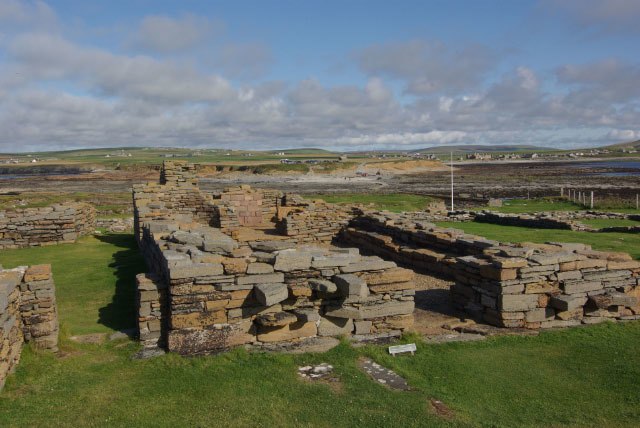Einarr Rognvaldarson, often referred to by his byname Torf-Einarr, was one of the Norse earls of Orkney. The son of the Norse jarl Rognvald Eysteinsson and a concubine, his rise to power is related in sagas which apparently draw on verses of Einarr's own composition for inspiration. After battling for control of the Northern Isles of Scotland and a struggle with Norwegian royalty, Einarr founded a dynasty which retained control of the islands for centuries after his death.
The mountains of Møre, Einarr's homeland.
The flat landscapes of North Ronaldsay. According to the Orkneyinga saga Einarr slew his enemy Hálfdan on the island.
A page from a vellum manuscript of the Landnámabók in the Árni Magnússon Institute for Icelandic Studies in Reykjavík, Iceland
"Odin Rides to Hel" (1908) by W. G. Collingwood
Earl of Orkney, historically Jarl of Orkney, is a title of nobility encompassing the archipelagoes of Orkney and Shetland, which comprise the Northern Isles of Scotland. Originally founded by Norse invaders, the status of the rulers of the Northern Isles as Norwegian vassals was formalised in 1195. Although the Old Norse term jarl is etymologically related to "earl", and the jarls were succeeded by earls in the late 15th century, a Norwegian jarl is not the same thing. In the Norse context the distinction between jarls and kings did not become significant until the late 11th century and the early jarls would therefore have had considerable independence of action until that time. The position of Jarl of Orkney was eventually the most senior rank in medieval Norway except for the king himself.
Ruins on the Brough of Birsay, once the seat of the early Norse jarls of Orkney. The Brough is now a tidal islet but in earlier times it was connected to Mainland Orkney by an isthmus.





